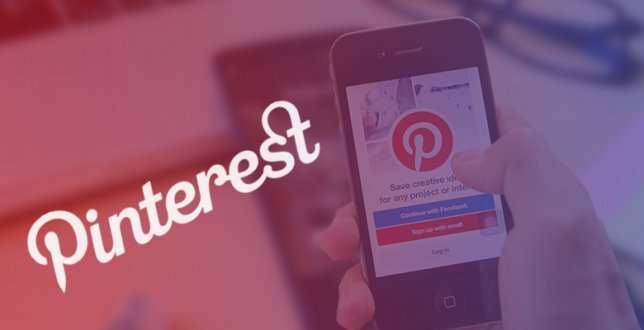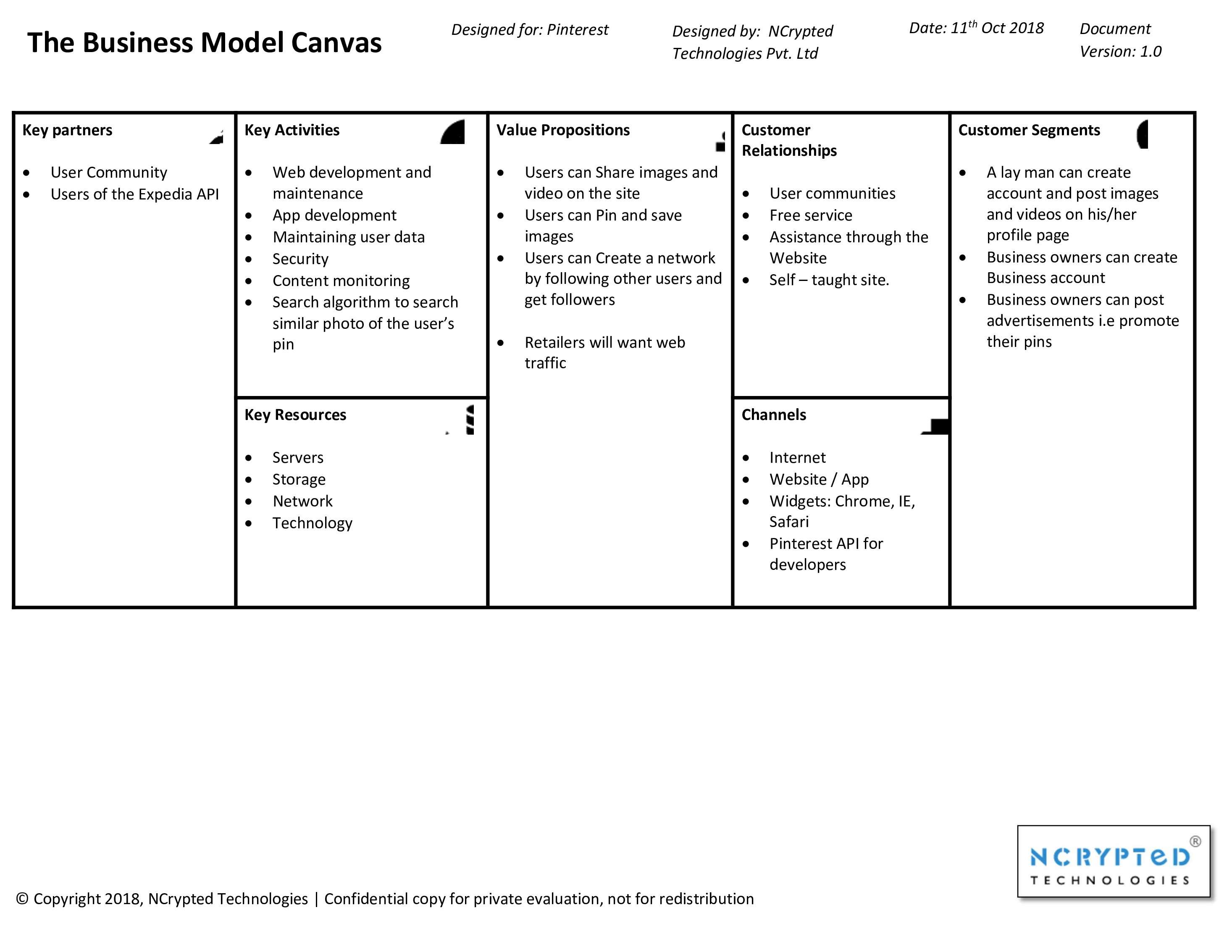
What is Pinterest?
Remember the days when we used to stick pictures, stickers, and other stuff on our fridge or some board in our living room? Just like many other things, the internet has replaced that thing as well. Pinterest is an app that uses “boards’ as the fridge doors & “pins” that are images or videos, as stickers. In simple words, it is your online scrapbook. While the world is divided about the effectiveness of Pinterest, we take a look of how exactly the app works.
A little bit of history never hurt anyone. Pinterest was founded by Ben Silvermann, Evan Sharp & Paul Sciarra in 2010. As described by Silvermann who was a former Google employee, Pinterest is a ‘catalog of ideas”. He was very accurate in that description. Started as a medium to share lifestyle, fashion & food pictures, Pinterest has today become a virtual catalogue of possibly everything you need to know.
How does Pinterest Work?
There are two types of visitors on Pinterest. Users & advertisers. Users are those who surf things on Pinterest & advertisers are mainly business owners who put their product information in very nicely clicked photographs & aptly written information. Both parties can “pin” anything on their boards. They can re-pin or share the pins as well.
While it started as merely a graphic sharing app, today Pinterest has become one of the biggest traffic navigators on the internet. Business owners are putting their products & ideas on Pinterest to attract buyers to their brand. A lot of this is helped by the feature that allows you to mention the price of your product & whenever there is an update on the price, the followers are notified about it in an email.
The question here really is how does Pinterest work for users, how is it different from other social networking apps and how useful it is for both buyers & sellers?
According to Pinterest themselves, approximately 200m people use it every month. More than half of them are international, that means over 100m users are from outside of the USA. With the evolution of the mobile internet, over 80% of Pinterest users use it from their mobile phone app. While some surveys suggest that over 80% users on Pinterest are women, Pinterest claims that over 50% of their new sign-ups are from men, which makes the ratio down to 30% men users compared to that of a whopping 70% women users.
Pinterest Business Model & Pinterest valuation
According to business insider, Pinterest is worth $5billion.
The Pinterest business model is one of a kind. While the revenue numbers may raise a lot of eyebrows, the fact still remains that Pinterest earns nothing from its users. There are no annoyingly popping up ads on Pinterest but however, they did try some promoted pins according to user interests. According to a blog post on its website, the co-founder Silvermann said that nobody was paying anything to them at that time.
Pinterest with about 200 million active monthly users is still behind twitter which boasts at 350 million active monthly users & SnapChat who has about 170 million active users. Sponsorship prices are based on active users & since ads or sponsored threads are the main source of revenue for all these apps, Pinterest was going to fall short of their rivals in terms of revenue. While Pinterest made $473 million last year, SnapChat made over &800 million & the app with the most sponsored threads twitter made over $2.4 billion.
How does Pinterest Make Money?
After all, you must be wondering, how does Pinterest make Money! Sticking with no ads policy, Pinterest launched buyable pins in 2016. They partnered with about 20,000 merchants with over 10 million products initially. This meant that any big or small vendor could have their own store on one of the most popular social mediums in the world. Its still unclear whether interest charges any sum to sellers, but it is understood that they have partnered with payment mediums & payment partners like Stripe & Braintree. With this move, ads became merely pins with price tags. So the users won’t be totally paranoid with product suggestions since they already know that they are in a virtual store & this way, the founders maintained the core of their initial business model that was to discover, pin & buy.
This turned out to be beneficiary for all parties. Pinterest had already generated a huge fan base & sellers were very happy because they got one more platform to sell their products on. Buyers were searching for ideas on Pinterest & then searching for similar styling or product from other websites. Instead, they could get exactly what they saw without leaving the Pinterest app or website. Pinterest on the other end was getting a hefty commission out of it.
Pinterest reckons that about 93% of Pinterest users visit them to plan purchases and about 87% have ended up buying what they like on Pinterest. Companies like FlyAway BlueJay which sells art products used buyable pins on Pinterest & saw 20% of their total sales was through these buyable pins. Among them, all of them were new customers. 28% of the total traffic on their website was diverted from Pinterest.
Another online clothing store called Shophearts saw 15% of their total sales & 20% of the traffic coming from buyable pins. An online store for gardening products called Gardener’s Supply Company saw their web traffic & total sales doubled since introducing buyable pins on Pinterest.
Initially, pinners could link their pins to any other third-party website. Bloggers could link pins to their blogs. Sellers could navigate the pin to their website. But the major decision was taken in 2015 when Pinterest decided to disallow any third party links for shopping. This was the same year when they introduced buyable pins. This meant that they were no longer just the traffic navigators. They could sell things on their own platform.
Pinterest Business Model Canvas

The deciding factor
The difference between any other e-commerce website/app & Pinterest was that their users had already selected things they were interested in. So it became ever so easy for vendors to target their buyers.
Pinterest maintained the cohesion between surfers & business owners. This meant that users could re-pin anything they liked & that acted as a shared ad for the vendor. This way, the vendors only had to pay for one pin, but because of the popularity of their products, their pins were re-pinned & shared across various boards. Pinterest liked to call it “promoted pins”. But it is assumed that the promoted pins are the biggest revenue generators for Pinterest. These promoted pins could be disguised as suggestions, but one can easily spot a promoted pin on the timeline.
This works well for both parties as Pinterest can offer a wide variety of products to its users & sellers can narrow down their target audience based on the interest boards & re-pins they get.
Pinterest the frontrunner
While the giant sharks like facebook & snap chat record a user growth in single digit, Pinterest claims that they have an annual user growth of over 50% which makes them the fastest developing social medium. This rapid growth attracted lots of retail companies to partner with Pinterest. One has to admit to the fact that Pinterest has the nicest, the most visually appealing & most organized sets of images on the internet. The pins mainly contain lifestyle, fashion & food interests. Technology & electronics though are not too far behind in generating revenue through Pinterest pins. What’s interesting is that if a company can’t produce enough re-pins or enough traffic on to their source website, they can disguise their products through other types of pins. For instance, SONY markets their cameras through pins containing pictures of “cute puppies”. It is very obvious to everyone that people are more likely to see & re-pin cute puppies pictures. So this way, sellers can market their products to a variety of pin types.
Needless to say that social media plays a massive part in all areas of today’s world. Cashing on the idea of Pinterest & its rapid growth, both the wives of presidential candidates in 2012, just a couple of years after its inception, used Pinterest to campaign for their husbands.
Pinterest has not only worked as a board or a catalogue but also served as a chest of ideas & suggestions, especially for fashion clothing & architecture. A vision that started as a virtual catalogue is worth a $5billion today. It is probably one of the biggest platforms to share ideas & introduce products. With celebrities & fashion brands partnering with Pinterest, it is on its way to challenge the A-listers in the game. A story worth telling your children isn’t it?
How to Start a Website Similar to Pinterest?
If you are attracted with the facts and figures of Pinterest and also want to start a similar Website like Pinterest then take a look at a customizable ready-to-go Pinterest clone script for your start-up.
Share your thoughts with us!
What is your opinion regarding the article on Insights into Pinterest Business model? Tell us in the comment section below.
Take a look at other interesting business models from the social media industry.



I agree with your view regarding the benefits users get to derive by sharing pins.
We are thinking of having a website for the same. My question is how we can use your technology to do that? How much is the cost?
I need to know how to build an app like Pinterest. Is this readymade clone app will do the exact Pinterest like mobile app.